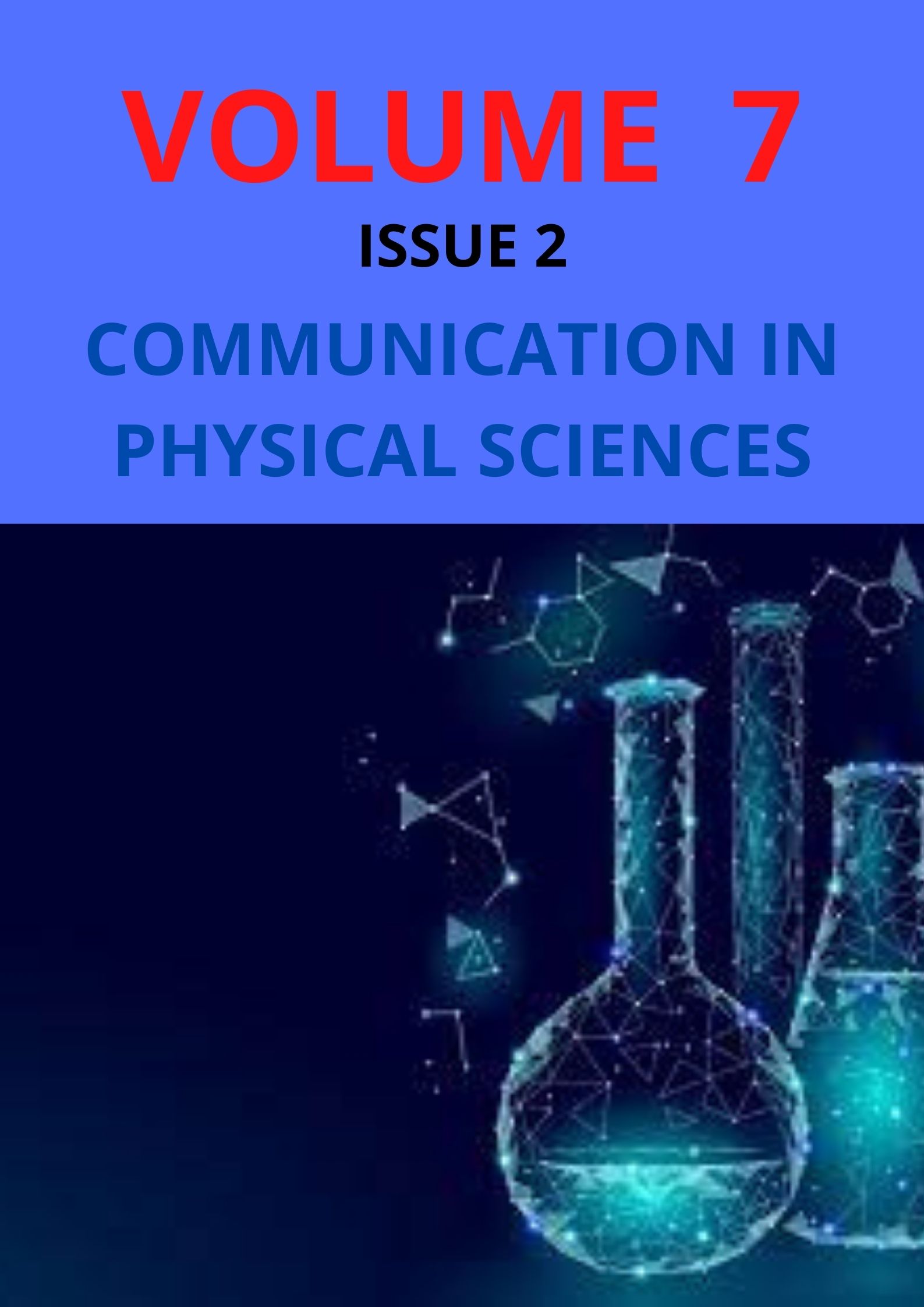Proximate, Minerals and Functional Properties of Bombax buonopozense Cclyx
Keywords:
Bombax buonopozense calyx, nutritional value, proximate, mineral and functional propertiesAbstract
Monday Musah, H. I. Muhammad, J. T. Mathew, Y. Azeh, M. T. Umar, S. N. Goshie
The nutritional constituents of Bombax buonopozense calyx were determined using standard methods. Results obtained from the proximate analysis indicated the presence of moisture (4.70±0.51 %), ash (5.50±0.47 %), crude protein (7.20±0.29 %), crude lipid (3.10±0.14 %), crude fibre (18.00±0.18 %), carbohydrate (66.20±0.27 %), and caloric value (279.85±0.31 kcal/100g). Mean concentrations of sodium, potassium, magnesium, calcium, and phosphorus were 25.00±0.09, 160.00±0.13, 48.10±0.47, 28.13±0.33 and 163.00±0.21 mg/100g respectively while measured values for functional properties were bulk density (0.52±0.01 g/cm3), water absorption capacity (2.35±0.35 %), oil absorption capacity (2.20±0.19 %), foaming capacity (13.72±0.27 %) and foaming stability (5.88±0.41 %). The results obtained compared favourably with most food materials and indicated that Bombax buonopozense calyx may be a good source of nutrients.
Downloads
Published
Issue
Section
Most read articles by the same author(s)
- Yakubu Azeh, Spectroscopic Characterization of Acetylated Wood Flakes and Its High-Density Polyethylene Blends , Communication In Physical Sciences: Vol. 8 No. 1 (2022): VOLUME 8 ISSUE 1
- Hauwa, I. Muhammad, Monday Musah, Sheriff Abdulfatai, Heavy Metal Concentrations in Various Species of Onion Bulbs in (Allium Spp.) Lapai Market, Niger State, Nigeria , Communication In Physical Sciences: Vol. 7 No. 2 (2021): VOLUME 7 ISSUE 2
- Abdulfatai A. Otori, Akeem A. Jimoh, John T. Mathew, Development of Heterogeneous Catalyst from Waste Cow Bone Using Parinarium Macrophylum Seed Oil for Biodiesel Production , Communication In Physical Sciences: Vol. 7 No. 3 (2021): VOLUME 7 ISSUE 3
- Yakubu Azeh, Monday Musah, John Tsado Mathew, Ameh Ohiga Alfa Ebune, Fatima Ibrahim, Umar Musa Tanko, Muhammad Umar Badeggi, Aliyu Ahmed Ibrahim, Abdulkarim Mohammed Awwal, Aishetu Ibrahim Muhammad, Karima Tani Muhammad, Ismail Haruna, Nasiru Ibrahim, Preparation of Conductive Antibacterial Film of Organoclay Origin , Communication In Physical Sciences: Vol. 12 No. 1 (2024): VOLUME 12 ISSUE 1
Similar Articles
- M. Musah, M. M. Ndamitso, H. Yerima, J. T. Mathew, G. O. Iwuchukwu, Nutritional Assessment of Vigna unguiculata sub spp. sesquipedalis Seeds , Communication In Physical Sciences: Vol. 5 No. 4 (2020): VOLUME 5 ISSUE 4
- M. M. Ndamitso, M. Musah, J. T. Mathew, V. T. Bissala, Comparative Nutritional Analysis of Daddawa Made from Fermented Parkia biglobosa and Glycine max Seeds , Communication In Physical Sciences: Vol. 5 No. 3 (2020): VOLUME 5 ISSUE 3
- Chidiogo Evelyn Ezechukwu, Ikimi Charles German, Evaluation of Nutritional and Phytochemical Profiles of Garcinia manni Oliv. Used as Chewing Ntick in Mbiama, River State , Communication In Physical Sciences: Vol. 11 No. 4 (2024): VOLUME 11 ISSUE 4
- Dr Fatai Afolabi, Mr Ismaila Jide Olawale, Professor Sunday 0. 0ladoye, Physicochemical, Phytochemical and Gas Chromatography- Mass Spectrometric Analyses of Gmelina Arborea Root Hexane Extract , Communication In Physical Sciences: Vol. 12 No. 6 (2025): Volume 12 ISSUE 6
- Saidu Usman, Comparative Study of Nutrient Compositions of Some Selected Cereal Grains Available in Shuwarin Market, Jigawa State, Nigeria , Communication In Physical Sciences: Vol. 9 No. 2 (2023): VOLUME 9 ISSUE 2
- U. Aletan, Comparison of the Proximate and Mineral Composition of two Cowpea Varieties obtained from Mile 12 Market, Lagos , Communication In Physical Sciences: Vol. 3 No. 1 (2018): VOLUME 3 ISSUE 1
- Usman Umar Modibbo, John Stanley, Martins Moses, Victoria John Danjuma, Nutritional and Chemical Characterization of Avocado Oil from Three Cultivars in Mambila Plateau, Taraba State, Nigeria , Communication In Physical Sciences: Vol. 12 No. 6 (2025): Volume 12 ISSUE 6
- Isaac Chukwutem Abiodun, Monday Edward Edem, Obasesam Ebri Agbor, Investigation of the Structural and electronic properties of Ternary AB₂X₄ based material via Density Functional Theory (DFT) for Optoelectronic Applications , Communication In Physical Sciences: Vol. 12 No. 1 (2024): VOLUME 12 ISSUE 1
- Adams, Abiodun Emmanuel, Comparative Study of the Proximate Analysis of Shea Butter Seed (Vitellaria paradoxa) Across three Different Locations in the Savanna Region of Nigeria , Communication In Physical Sciences: Vol. 10 No. 3 (2023): VOLUME 10 ISSUE 3 (2023-2024)
- M. Runde, M. H. Shagal, A.M. Gunda, Proximate Composition of Leaf and Phytochemical Screening of Leaf, Stem and Root of Tridax procumbens Cultivated in North-East Nigeria , Communication In Physical Sciences: Vol. 5 No. 4 (2020): VOLUME 5 ISSUE 4
You may also start an advanced similarity search for this article.




